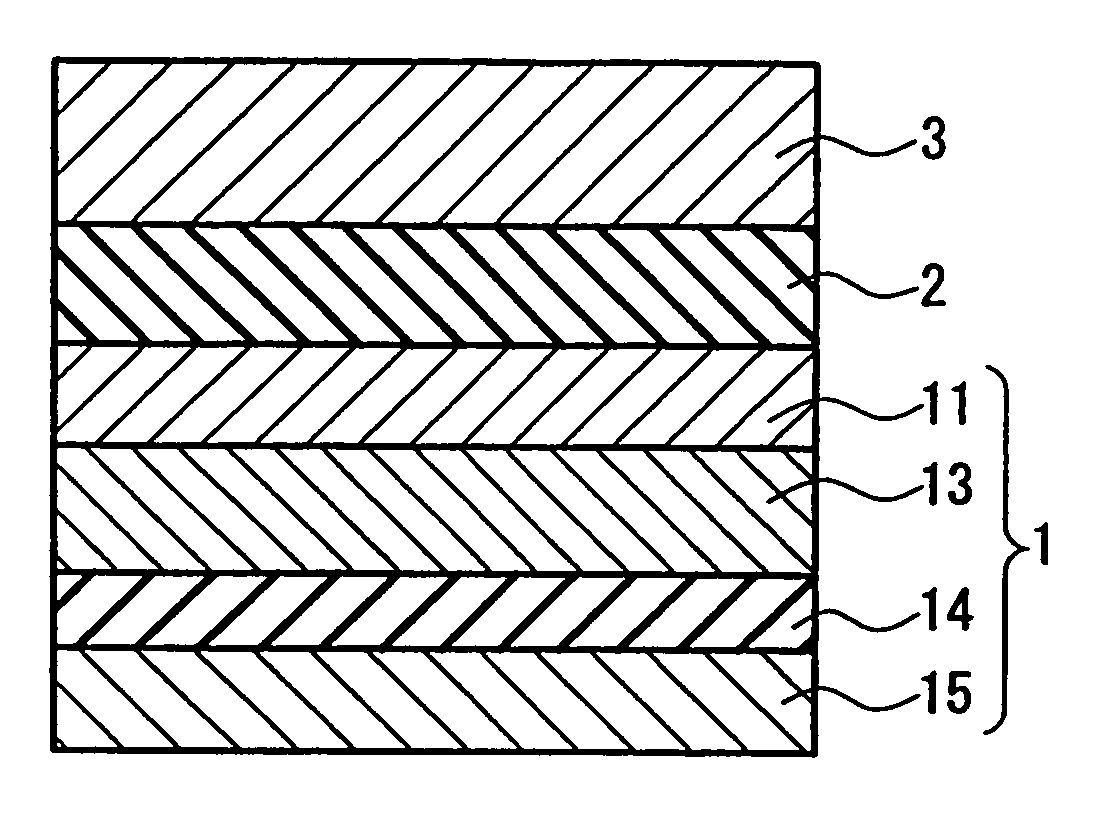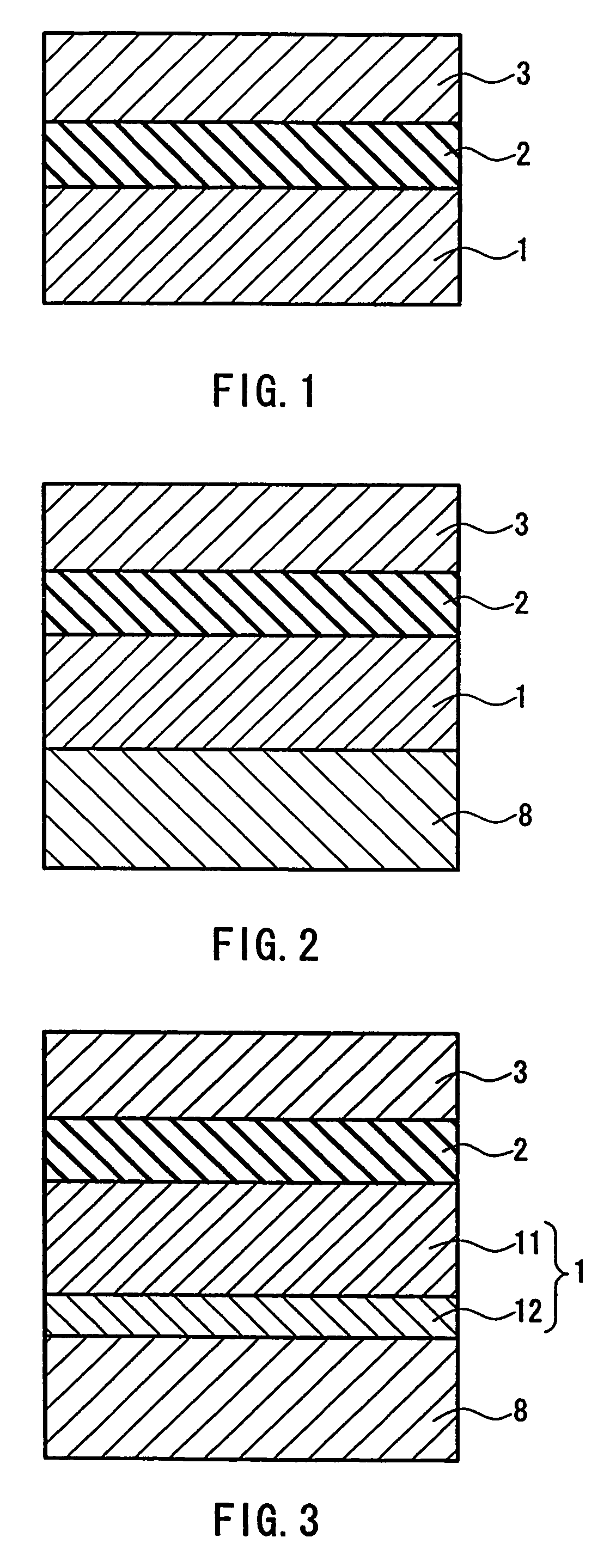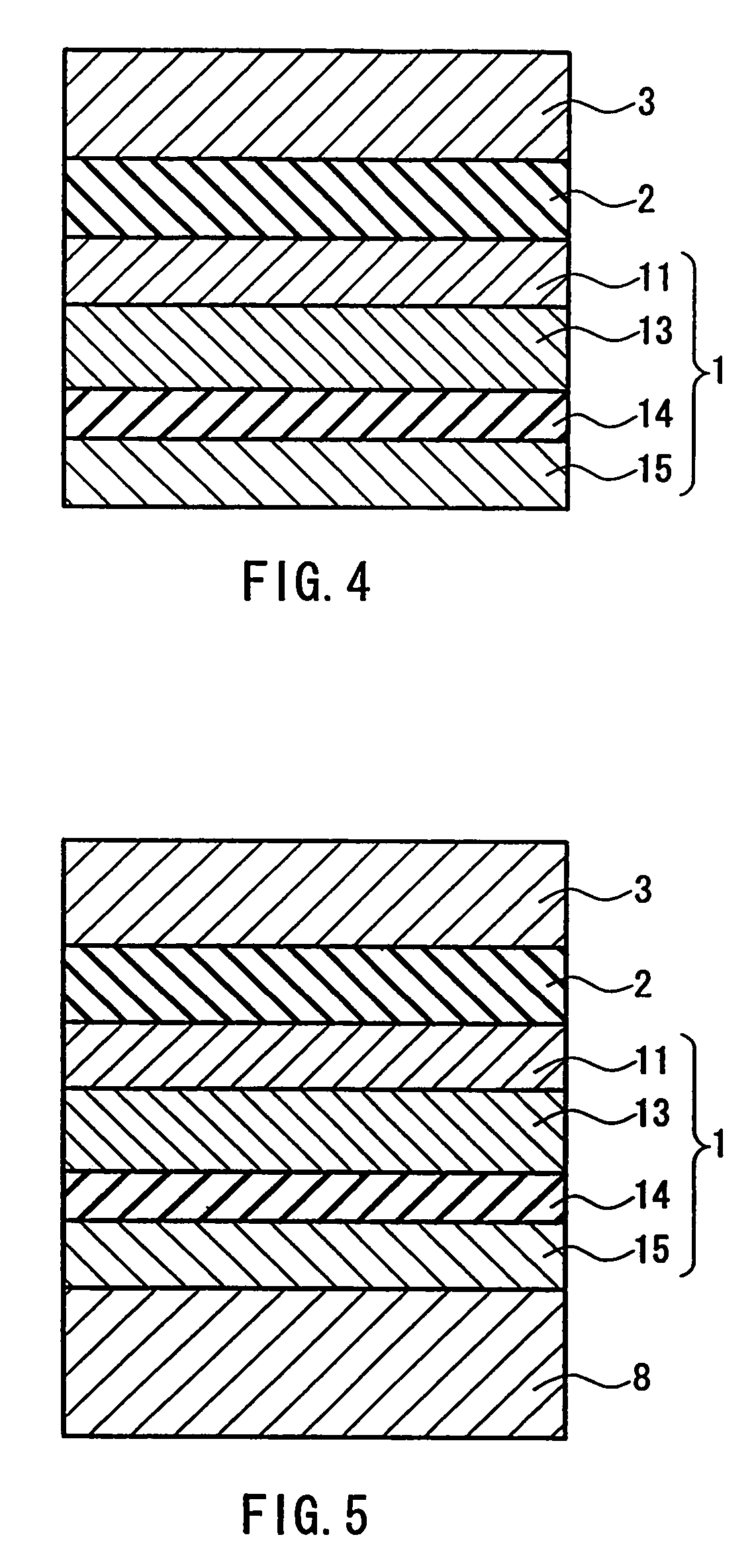Magnetoresistive element and magnetoresistive magnetic head, magnetic recording apparatus and magnetoresistive memory device using the same
a technology of magnetic head and magnetic element, which is applied in the direction of nanoinformatics, magnetic bodies, instruments, etc., can solve the problems of insufficient conventional mr element to meet the above demand, non-magnetic layer may affect the degradation, etc., and achieve excellent thermal stability, increase spin polarization, and large mr ratio
- Summary
- Abstract
- Description
- Claims
- Application Information
AI Technical Summary
Benefits of technology
Problems solved by technology
Method used
Image
Examples
example 1
[0106]Si substrate with a thermal oxide film / Ta(3) / Cu(50) / Ta(3) / Pt—Mn(20) / Co—Fe(1) / ferromagnetic material M-X(2) / Al—O(1.0) / Co—Fe(3) / Ta(15)
[0107]Here, the figures in parentheses denote the film thickness (in nm; the film thickness is expressed in the same manner in the following). The thickness of the Al—O film is a designed thickness (i.e., total thickness) of Al before oxidation (this is the same in the following, including nitridation and oxynitridation for Al—N and Al—N—O). The Al—O was prepared by forming an Al film having a thickness of 0.3 to 0.7 nm and oxidizing the Al film repeatedly in an atmosphere containing oxygen (200 Torr (about 0.267 MPa), 1 min).
[0108]The Ta(3) / Cu(50) on the substrate is a lower electrode, and the Ta(3) adjacent to the Pt—Mn is an underlying layer. The Ta(15) is a protective layer of the MR film, and a portion of the Ta(15) also acts as an upper electrode. The Pt—Mn corresponds to an antiferromagnetic layer. Each film was micro-processed in mesa fash...
example 2
[0115]Si substrate with a thermal oxide film / Ta(3) / Cu(50) / Ta(3) / Pt—Mn(20) / Co—Fe(3) / Ru(0.9) / Co—Fe(1) / ferromagnetic material M-X(2) / Al—O(1.0) / ferromagnetic material M-X(2) / Ni—Fe(5) / Ta(15)
[0116]The method for forming the Al—O film was the same as that in Example 1. Each film was processed in mesa fashion in the same manner as Example 1, and Cu(50) / Ta(3) was formed as an upper electrode. Subsequently, the element was heat-treated at 280° C. for 3 hours in a magnetic field of 5 kOe so as to impart unidirectional anisotropy to the Pt—Mn. The element area of a sample was 2 μm×3 μm.
[0117]This MR element is a laminated ferrimagnetic pinned layer spin-valve type TMR element having the configuration in accordance with FIG. 5, and a ferromagnetic material M-X is used for a portion of the pinned layer 1 and a portion of the free layer 3. The free layer 3 includes an Ni—Fe soft magnetic layer. The MR ratio of this element was examined in the same manner as Example 1. Table 2 shows the result.
[011...
example 3
[0121]Si substrate with a thermal oxide film / Ta(3) / Cu(50) / Ta(3) / ferromagnetic material M-X(5) / Al—O(0.8) / Co(3) / Ir—Mn(15) / Ta(20)
[0122]The Al—O was prepared by forming an Al film having a thickness of 0.8 nm and applying ICP oxidation to the Al film. The Ir—Mn corresponds to an antiferromagnetic layer. Each film was processed in mesa fashion in the same manner as Example 1, and Cu(50) / Ta(3) was formed as an upper electrode. Subsequently, the element was heat-treated at 250° C. for 2 hours in a magnetic field of 5 kOe so as to impart unidirectional anisotropy to the Ir—Mn. The element area of a sample was 3 μm×3 μm.
[0123]This MR element is a spin-valve type TMR element having the configuration in accordance with FIG. 2, which is turned upside down, and a ferromagnetic material M-X is used for the free layer 3. The MR ratio of this element was examined in the same manner as Example 1. Table 3 shows the result.
[0124]
TABLE 3Sample No.Ferromagnetic material M-XMR(%)(Conventional example)[Fe...
PUM
| Property | Measurement | Unit |
|---|---|---|
| temperature | aaaaa | aaaaa |
| temperatures | aaaaa | aaaaa |
| temperatures | aaaaa | aaaaa |
Abstract
Description
Claims
Application Information
 Login to View More
Login to View More - R&D
- Intellectual Property
- Life Sciences
- Materials
- Tech Scout
- Unparalleled Data Quality
- Higher Quality Content
- 60% Fewer Hallucinations
Browse by: Latest US Patents, China's latest patents, Technical Efficacy Thesaurus, Application Domain, Technology Topic, Popular Technical Reports.
© 2025 PatSnap. All rights reserved.Legal|Privacy policy|Modern Slavery Act Transparency Statement|Sitemap|About US| Contact US: help@patsnap.com



